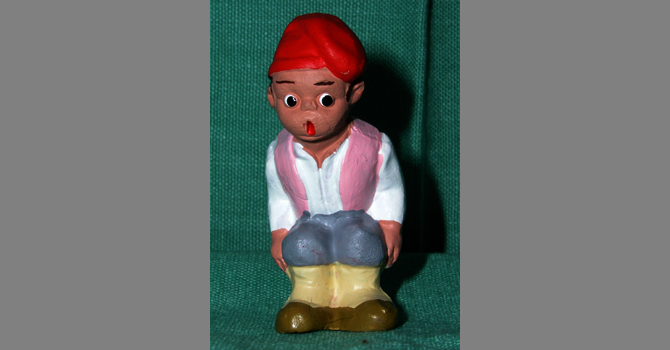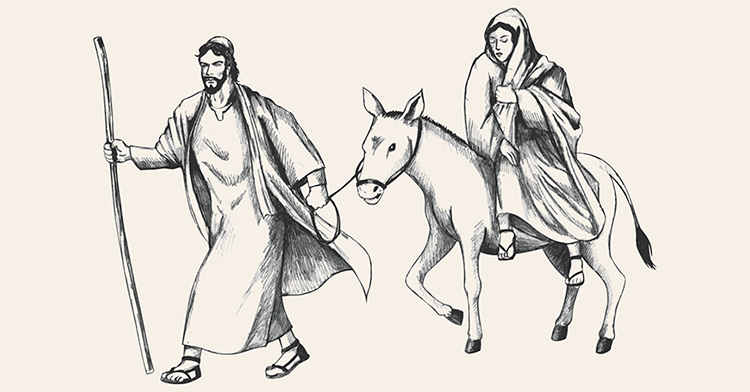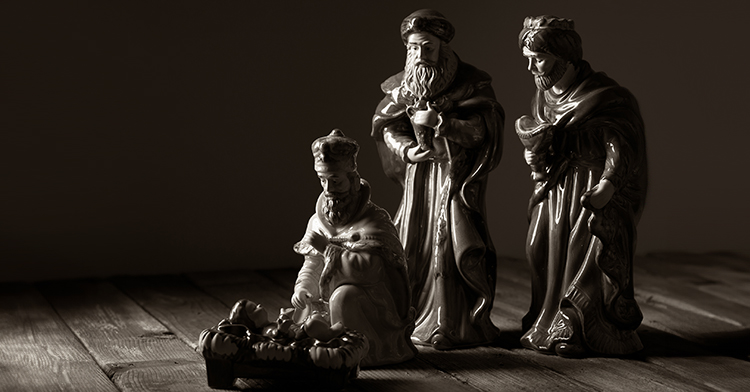There are many kinds of nativity scenes.
Some are simple: Jesus, Mary and Joseph in a quiet moment before the shepherds arrive, or perhaps after they’ve returned to their hillside, leaving the new parents to ponder the night’s events.
Some are more elaborate, incorporating the shepherds and their sheep, the holy family’s donkey, and maybe an ox or two. In families I know, a Barbie doll, a windup mouse and Big Bird have all ended up around the manger. Parents who have taught their children about God’s wildly inclusive love don’t dare evict those newcomers.
The composition of nativity scenes varies by culture, too. Years ago, I learned from Catalonian friends about an indispensable figure who graces crèches throughout their community: El Caganer -- politely translated as “The Pooper.” El Caganer (kah-gah-NAIR) is a peasant, dressed in traditional costume, pants down, in the act of defecation. The evidence of his urgent need is visible on the ground behind him. Usually he squats in a corner of the stable as Mary, Joseph and the shepherds gather around the Christ child.
Taken in context, The Pooper fits right in. He’s a poor farmer, an economic and cultural cousin of the shepherds who were the first people God chose, outside Jesus’ family, to receive the news of his birth.
Still, we may wonder: Why couldn’t El Caganer tend to his business outside the stable and then enter to pay his respects? Why are millions of Christians so convinced that he belongs in their nativity scenes?
I can think of two reasons, which are helpful to contemplate in this Advent season. The first is eschatological -- not (forgive me) scatological. El Caganer reminds us that Jesus will return on the divine schedule, when God’s ready, whether we are -- or decidedly are not. That’s the warning that resonates through Advent texts like Jesus’ command to “keep awake -- for you do not know when the master of the house will come.”
While El Caganer’s presence in the stable reassures us that Jesus Christ welcomes everyone who desires to know him, the peasant figure also calls us to get ourselves together in preparation for that meeting.
The second reason for El Caganer’s presence is that he reminds us of the call at the heart of the incarnation: to stand with the vulnerable and to risk becoming vulnerable ourselves, as Jesus did for our sakes.
In this life, that often means being willing to take care of others’ needs. Most of us begin to learn this at a young age. Think of the first time you begged your parents for a pet: “I’ll take good care of him, I promise!” What was your parents’ answer? “Who will clean her litter box?” Or cage, or aquarium? They can’t do it themselves.
Neither can babies, or people with certain disabilities or illnesses, or elders who can no longer feed or clean themselves. People living on the street, or in substandard housing, may be locked out of decent facilities that many of us take for granted.
Not shying away from the reality of the world’s mess -- both literally and figuratively -- is part of the church’s countercultural witness. We’re called to ask questions others may be too uninformed, embarrassed or disdainful to voice.
Like: Where are homeless people supposed to go to the bathroom? Why aren’t there diaper-changing tables in most men’s rooms? Why are wages for child care and nursing home workers so shockingly low?
We need to put those questions to the larger society. But as the body of Christ, the church is called to do more: to take responsibility for poop that’s not our own, as a sign of love for our neighbors.
I was reminded of that reality a few years ago, on my first morning as the pastor of a small mission church in an urban shopping district. Advent had just begun, and waiting for me on the church doorstep was a gift from some unknown local caganer.
I never found out who left that calling card, or their motivation. Desperation? Drunkenness? Hostility? Maybe all three. But I suspected that it was a member of the community of homeless men who camped on the church’s grounds, and I interpreted this experience as a call to enter into relationship with those men.
Our church was the only space in a several-block radius where people could gather without spending money or paying membership dues. It was the only place where people as poor as the shepherds of Bethlehem, or as wealthy as the magi, could meet simply because God had called them together.
And I knew that if the church and our homeless neighbors were going to grow in fellowship together, we would need to share not only food, prayer and conversation but also the church’s toilets.
From that obvious insight, a relationship grew. Twice daily, the church opened for prayer and the parish hall was available for rest and refreshment. Over time, a few church members deepened their friendships with some of our homeless neighbors. Those relationships led to the establishment of a group house nearby, where several of those neighbors now live together. Donations from a wide base of supporters cover the rent, and the house is open for fellowship -- and showers, laundry and other sanitary needs -- most of the day.
The road to establishing the house wasn’t easy, its future isn’t certain, and the church -- now guided by another priest -- continues to negotiate its relationship with its homeless neighbors.
As demanding as these faithful struggles can be, they are, like nativity scenes, hopeful and joyful signs of Jesus Christ’s presence among us. And they’re an answer to El Caganer’s call, in this season of the incarnation, to love each other as God loves us, poop and all.









